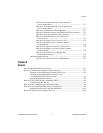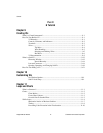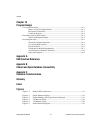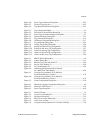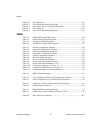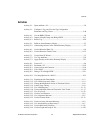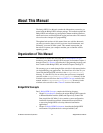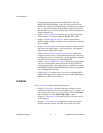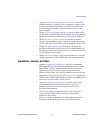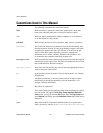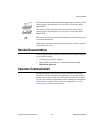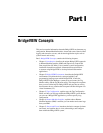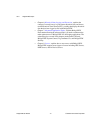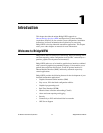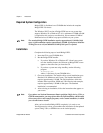
About This Manual
BridgeVIEW User Manual xx © National Instruments Corporation
programming language upon which BridgeVIEW is built, the
BridgeVIEW Engine Manager, system errors and events, the Tag
Monitor utility, and the Tag Browser utility. This chapter also explains
how to access online help for BridgeVIEW and provides an activity
that illustrates how to examine the front panel and block diagram of a
virtual instrument (VI).
• Chapter 3, Tag Configuration, explains tags, the Tag Configuration
Editor, and how you edit tags within the BridgeVIEW system.
• Chapter 4, Human Machine Interface, explains what a Human
Machine Interface (HMI) is and how you can monitor and control tags
from your HMI.
• Chapter 5, Alarms and Events, introduces the basic concepts of alarms
and events, and explains how to view, acknowledge, and configure
them within the BridgeVIEW system.
• Chapter 6, Historical Data Logging and Extraction, explains the
concept of a trend, how to log and extract historical data, and how to
use the Historical Trend Viewer (HTV), a utility that displays historical
data that has been logged to disk with BridgeVIEW.
• Chapter 7, Advanced Application Topics, explains the advanced topics
you need to understand to make optimum use of BridgeVIEW for
developing applications. The advanced topics covered in this chapter
are the Panel G Wizard, BridgeVIEW System Control, Tag Attributes
VIs, and BridgeVIEW Security.
• Chapter 8, Servers, explains how to use servers with BridgeVIEW.
BridgeVIEW supports several types of servers including OPC Servers,
DDE Servers, and IA Device Servers.
G Tutorial
Part II, G Tutorial, contains the following chapters.
• Chapter 9, Creating VIs, introduces the basic concepts of virtual
instruments and provides activities that explain how to create the icon
and connector, how to use a VI as a subVI, how to use the VI Setup…
option, and how to use the SubVI Node Setup… option.
• Chapter 10, Customizing VIs, introduces the basic concepts used for
customizing VIs.
• Chapter 11, Loops and Charts, introduces structures and explains
the basic concepts of charts, the While Loop, and the For Loop.



